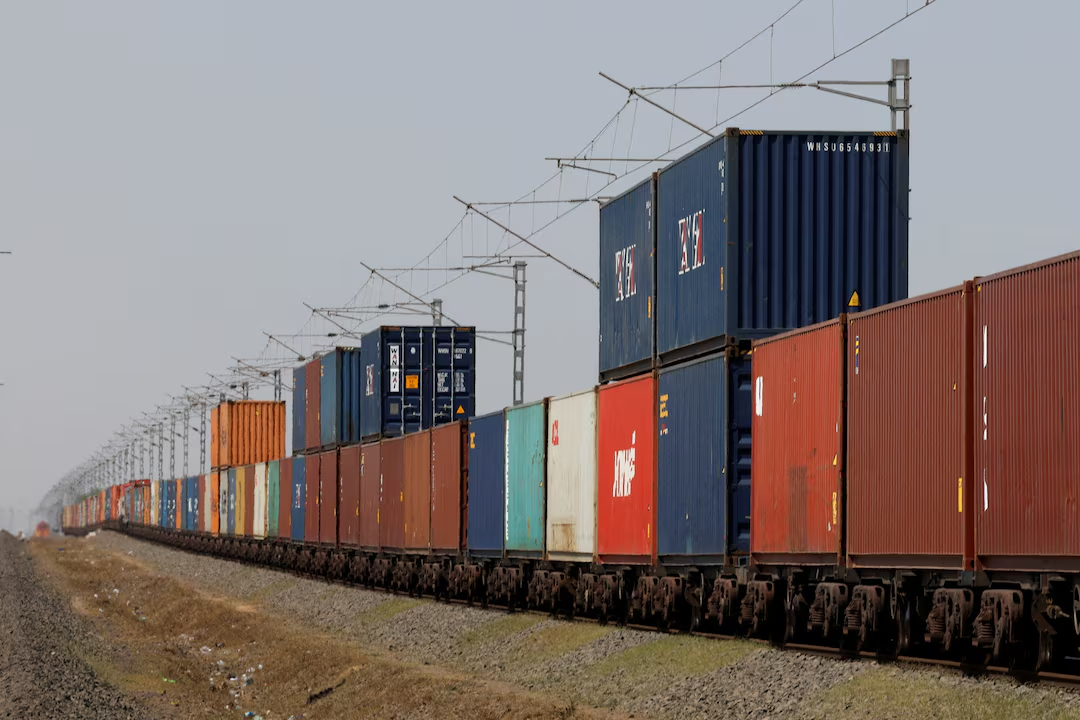Indian exporters are bracing for a major blow after the U.S. Department of Homeland Security confirmed that Washington will impose an additional 25% tariff on all Indian-origin goods starting Wednesday. The move, announced earlier this month by President Donald Trump, is retaliation for New Delhi’s rising purchases of Russian oil.
The new measures will push duties on Indian goods to as high as 50%—among the steepest tariffs Washington has imposed on any trading partner. According to the Homeland Security notification, the tariffs will apply to all Indian goods entering the U.S. for consumption after 12:01 a.m. EDT Wednesday, or 9:31 a.m. IST. Exceptions will only be made for in-transit shipments with certification, humanitarian aid, and items covered under reciprocal trade agreements.
Market Reactions and Rupee Slide
Financial markets reacted swiftly. The Indian rupee weakened 0.2% to 87.75 against the U.S. dollar in early trading, even as the greenback slipped against other major currencies. Equity benchmarks in Mumbai also slipped around 0.8%, reflecting investor concerns over the impact of the tariffs on exporters and corporate earnings.
The Homeland Security notice reiterated that the tariffs were a direct response to India’s “indirect support” of Russia’s war in Ukraine.
Government Response: Diversification and Relief
India’s Commerce Ministry did not immediately comment on the notification. However, an official familiar with the matter said, “The government has no hope for any immediate relief or delay in U.S. tariffs.” The official, who spoke on condition of anonymity, added that exporters facing losses would be offered financial assistance and encouraged to diversify into alternative markets.
“The government has identified nearly 50 countries for increasing Indian exports, particularly of textiles, food processed items, leather goods, [and] marine products,” the official said.
Prime Minister Narendra Modi has also signaled defiance, vowing not to compromise the interests of Indian farmers even if the new tariffs prove costly. Modi is simultaneously preparing for his first visit to China in seven years, signaling a potential shift in India’s trade and diplomatic balancing act.
Exporters Sound Alarm
Export groups warn that the tariffs could impact over half of India’s merchandise exports to the U.S.—worth about $87 billion annually. Competitors such as Vietnam, Bangladesh, and China are expected to benefit from the disruption.
“The U.S. customers have already stopped new orders. With these additional tariffs, the exports could come down by 20-30% from September onward,” said Pankaj Chadha, president of the Engineering Exports Promotion Council.
Chadha added that the government had promised financial aid, including subsidies on bank loans and support for diversification efforts. Still, he cautioned, “Exporters see limited scope for diversifying to other markets or selling in the domestic market.”
Economic Risks
Analysts are warning of broader economic fallout if the tariffs remain in place. Capital Economics recently estimated that a full 50% tariff regime could shave 0.8 percentage points off India’s GDP growth both this year and next, posing the steepest earnings downgrade risk in Asia.
While New Delhi has discussed possible domestic tax cuts to cushion the blow, economists believe these measures may not fully offset the impact on exporters and corporate profits.
Diplomatic Tensions
Foreign Minister S. Jaishankar has sought to frame the tariffs as unfair, pointing out that Washington has not applied similar pressure on other large buyers of Russian oil. “Washington’s concern over Russian oil purchases was not equally applied to other major buyers such as China and the European Union,” he said last week, while emphasizing that trade talks with the U.S. remain ongoing.
With the tariffs set to take effect within hours, India faces not only the immediate challenge of protecting its exporters but also the longer-term test of navigating between its energy security needs and its relationship with Washington.






